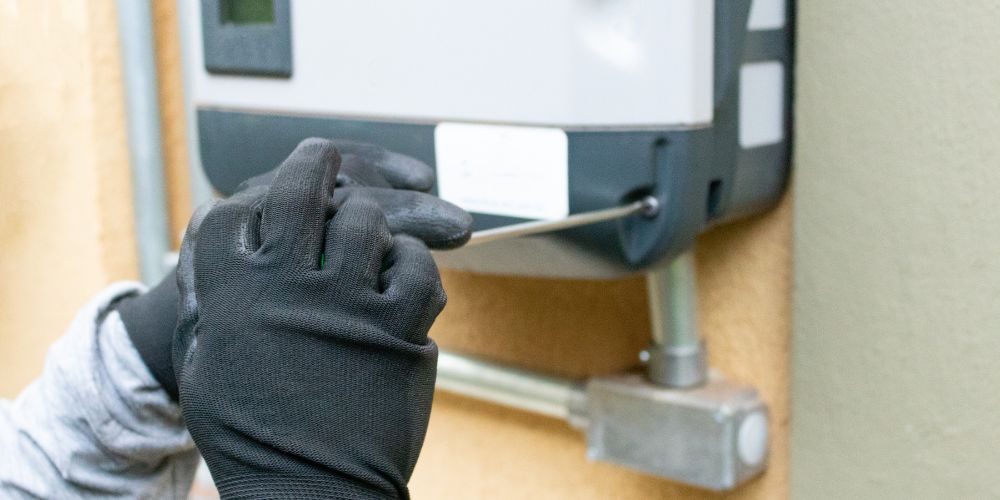Solar inverters are an essential yet often-underappreciated component of any solar energy system, harnessing the power of solar energy captured by solar panels and transforming it into usable energy for your household. Selecting the right solar power inverters for your home will depend on your roof’s structure, how much shade it receives, the purpose of your solar power usage, and the utility guidelines of your residential area, among other key factors.
In this article we’ll look closer at the four main types of solar inverter, and the advantages and disadvantages of each, in an attempt to make your selection process a little easier.
String, or “central”, inverters are ideal for simple solar power systems. The device connects an array of solar panels to a central inverter using one or more “strings”, allowing for a seamless flow and transformation from DC to AC electricity, suitable for powering your home.
String inverters are relatively simple to maintain, being easily accessible from their usual basement or garage location. They are also the cheapest option of the four examined in this article, since one inverter can accommodate multiple strings of panels across several roof surfaces. They’re also surprisingly durable, due in part to the simplicity of their design and setup.
The flipside of this system is that one underperforming panel can affect all other panels connected to it. For this reason, string inverters are not a good fit for roofs with regular shading, or with complex designs that don’t allow for the simple matching of panels into strings. That said – for rooftops that are basically laid-out and receive consistent sunshine, string inverters are your best and cheapest option.
Unlike string inverters, microinverters are distributed, with a small inverter installed next to each solar panel, transforming DC to AC electricity right at the source.
Microinverters are most suitable for homes with complicated solar array designs and consistent shading, since they maximize the performance and monitoring of each panel to mitigate excessive shade. They are also inherently scalable, should you wish to expand your system in the future – unlike string inverters, which aren’t designed to handle any additional generation of electricity.
On the other hand, microinverters are more expensive than string inverters, and harder to maintain since they’re located on the roof, which makes servicing more of a challenge. In short, microinverters are your best bet for shady roofs with complicated layouts and panels facing in multiple directions.
This type of solar inverter aims to strike a happy balance between string inverters and microinverters. Like the former, they transfer the energy from your panels to a central inverter. And like the latter, power optimizers are installed next to individual panels.
Power optimizers optimize the electricity voltage and condition DC electricity before sending power to the string inverter. And they can mitigate the effects of shading on individual panels by maximizing each panel’s output. They are also ideal for optimizing challenging rooftop layouts, and obstacles including chimneys and gables.
Power optimizers tend to cost more than string inverters, but less than microinverters – although like the latter, they are harder to maintain than the simple string inverter. Power optimizers are ideal for homeowners with complicated, shady or obstructed roofs, who are reluctant to invest in microinverters.
Hybrid inverters – the newest addition to the world of solar energy inverters – combine a PV inverter with a battery inverter, and are available in a straight string and optimized string configuration.
These inverters have the unique advantage of being able to convert electricity from DC to AC and vice versa – making it suitable both for powering your home and charging solar batteries or electric vehicles. This makes it particularly appealing to EV owners, since you can connect an EV charger directly to the hybrid inverter, and avoid additional costs for main panel upgrades.
This makes it ideal as an energy backup system, since you can install it like a regular inverter, and add a battery to the system at no additional cost. Once the battery is installed, homeowners can source energy from the grid to charge it up, making it easy to store energy when it’s more affordable, and use it when rates go up, or the power from your solar energy system isn’t meeting 100% of your demands.
As with microinverters, the hybrid inverter’s main downside is its cost; and like string inverters, hybrid inverters are not yet 100% adaptable with, or reliable for, complicated roof designs or consistent shade. Nonetheless, they are a great option for anyone considering energy storage options, or electric vehicle owners.


